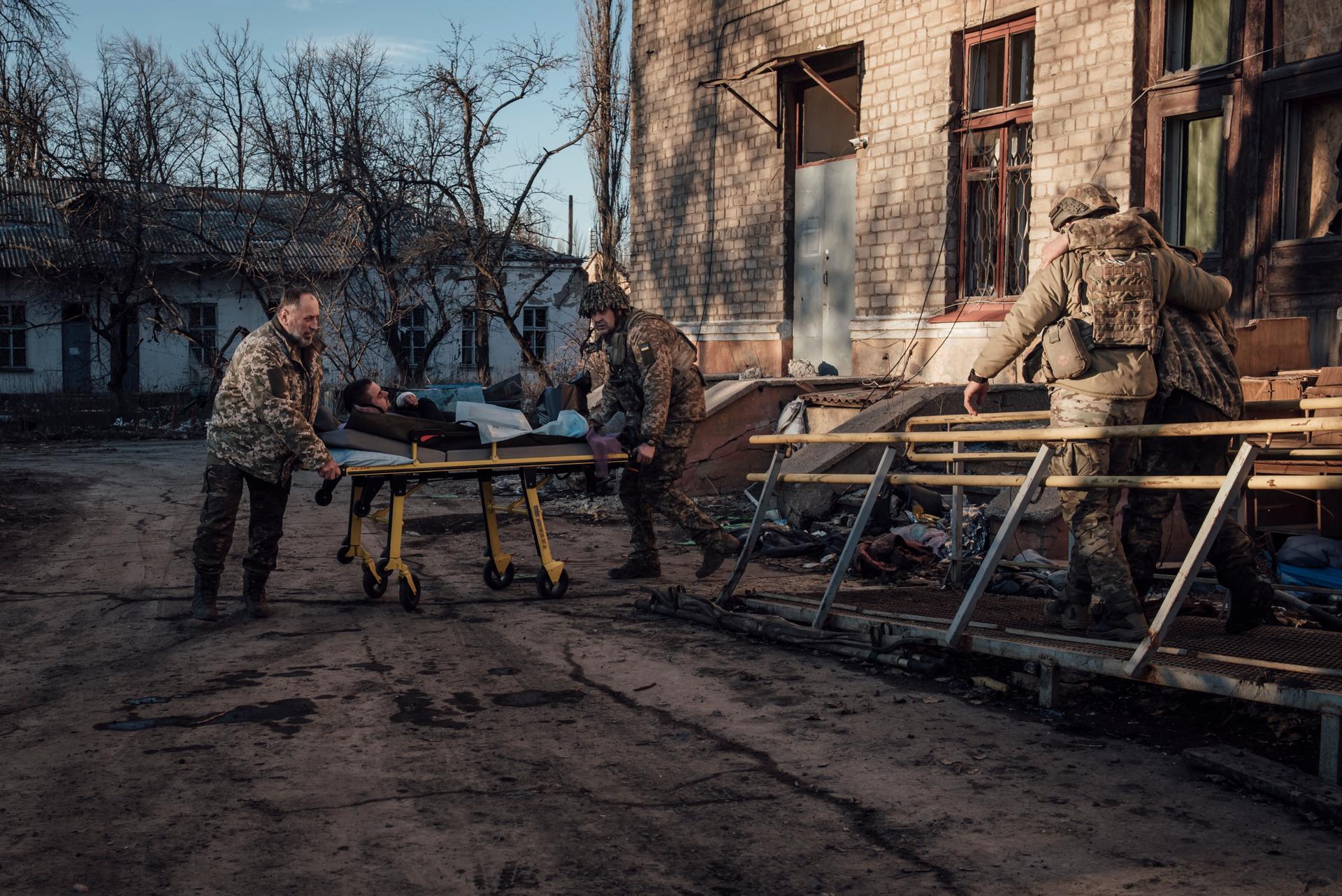


War in Ukraine: The complicated evacuation of the wounded from the frontline
FeatureWhile the number of wounded soldiers, like that of the deceased, is kept secret by the Ukrainian government, it amounts to tens of thousands of men, increasingly subjected to Russia's firepower. Society cares what happens to them.
Lieutenant Dmytro Migulev, head of the 1st Ivan Bohun Special Forces Brigade's medical unit, raced along the chaotic road filled with a mixture of muddy snow between Chasiv Yar on the Bakhmut front and Kostiantynivka, the first village at the rear. The Ukrainian military doctor oversees the wounded arriving from the front. Once they have passed through the Chasiv Yar "stabilization point," hidden in an underground passageway amid bomb-ravaged buildings, they are sent either to his brigade's dispensary or, for the most serious cases requiring surgery, to the region's hospitals.
In the carnage that is the war in Ukraine for soldiers on both sides, doctors, nurses and paramedics are facing the worst influx of wounded victims on a European battlefield since the Second World War.
"The main difficulty in this war is extracting wounded soldiers from the frontline. It takes between six to 24 hours," said Migulev. That's plenty of time to bleed to death, or for a wound to become infected. Once they arrive at the stabilization point, however, the wounded are not only quickly treated but are promptly dispatched to a military hospital because, in these cramped spaces with few stretchers and beds, room must be made for the next wave.
A debate is currently raging in Ukraine over the treatment of wounded combatants. The government keeps the number secret, as it does with that of the deceased, but it amounts to tens of thousands. And society cares what happens to them. President Volodymyr Zelensky acknowledged "the need for a renewed effort in medical support for the army" when he announced on November 19 that General Anatoly Kazmirchuk would replace General Tetyana Ostaschenko at the helm of the Armed Forces Health Service. Previously, Kazmirchuk had been head of Kyiv's main military hospital.
Poor quality emergency equipment
Zelensky changed defense minister in September and has made a series of armed forces-related announcements in recent months. His intervention comes in a context where the political leadership is attempting to both organize the country for a prolonged war and address scandals or suspicions of corruption.

In the medical field, officers and soldiers do not hide the fact that some of the equipment supplied, such as first-aid kits, is of poor quality. A large number of tourniquets made in China have proved unusable. Many fighters have to buy their own equipment or obtain it from civilian organizations supporting the army. "The changes will happen quickly," promised the new defense minister, Rustem Umerov.
You have 65% of this article left to read. The rest is for subscribers only.
